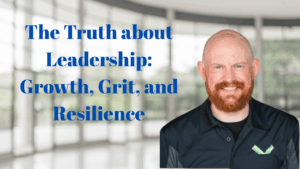
Blog
What is Qualification and What’s the Role of Sales Engineers in it?
When we talk about the sales cycle, it always starts with a lead. It doesn’t matter where it came from, but that’s where it starts.
Generally speaking, the lead goes to a Sales Development Representative (SDR), a Business Development Representative (BDR), Inside Sales. I will be using SDR going forward.
SDRs are usually an entry-level role. Now I expect there might be some experienced SDRs or BDRs out there, but to my knowledge, it’s an entry-level role. Their job is to qualify the deal, and send it to the right account team. If the account or opportunity is small enough, they can even work on closing the deal.
If the deal is big enough, they are supposed to qualify it. There are many qualification methods, but the 2 most popular are BANT and MEDDIC
BANT stands for Budget, Authority, Need, and Timing
Budget: do they have money
Authority: who can make the decision to buy
Need: Do they actually need the solution they are asking for
Timing: when would they need to buy
MEDDIC
Metrics: how will they measure success
Economical Buyer: who will pay for the
Decision Criteria
Decision Process
Identify Pain
Champion
Since I’m a hybrid, here’s the problem that I run into as a Salesperson: None of that is done.
I understand MEDDIC might be too complicated, and some customers don’t want to talk about the budget or any of that, but these are hard discussions that need to take place.
So what happens, the SDR sets up a call for the Account Manager with an unqualified customer. Sometimes account managers invite their SEs to this unqualified meeting, especially if they are tied one-to-one with them.
Sometimes Account Managers attend the meeting on their own, and then set up another call with the SE. This could be another discovery call or a straight-up demo. This is when you hear a lot of SEs complain about traveling across the country to do a demo only to find that the customer has 5K for a million-dollar solution.
So how does this affect the sales engineer?
The SE would be pulled into many meetings that are not going anywhere. Here’s the thing, if you have time, going to those meetings is a good thing. You get to practice your skills, whether it’s asking questions, presenting, or doing demos. You can experiment with different techniques.
Now let’s say you’re a busy SE, and you have to pick and choose the meetings you need to go to, which is a more likely scenario, the first thing you have to do is run a qualification with the account manager. that means that you have to ask them the questions that should have been asked to the customer.
If you notice that you are asking the same questions over and over, then create a checklist and add it to your process, even if it’s informal. If you talk to fellow SEs and they are running into similar problems, then an option would be to work with them and your manager to formalize this.
The questions that I ask are usually very direct when I’m talking to my AMs. No need to beat around the bush. Some questions that come to my mind are:
1- Do they have a budget?
2- Who are meeting with? What’s their role and what do they care about?
3- What is their biggest business problem that they are trying to solve?
4- what are they doing today?
5- What changed that they want to talk to us now?
6- when are they looking to have a solution implemented?
7- Have they talked to any other vendors?
They don’t have to answer every question, but they have to have some answers for you to choose to get into that meeting. Many of these questions you get to ask again in the meeting. Also, many answers lead to other questions.
Now when we meet the customers. there is a term that I loved when I was in support, which is Trust but Verify!
That means that I trust the salesperson, I trust my customer, but I still need to verify.
For example, I was on a call with another SE, an account manager, inside sales, and a customer. Now the customer had done some research and said he needed a particular product when he contacted our inside salesperson.
We jumped on the call, and the SE immediately started explaining about the product that we had discussed, but we don’t even know why he wanted that specific product. So we had to pull back and start qualifying again. We had to discuss his needs, what they are doing today, etc.
During that conversation, we found that he has some tools today, so their need is a bit iffy. We also understood that they don’t have a lot of money right now, so that’s another roadblock they need to overcome.
From a technical perspective, throughout our discovery call the product that fits their need was a different product rather than the product he initially asked for. There was one small comment that cemented which product we needed to provide.
So what does that means?
So basically the call was never qualified by anyone ahead of time, so we had to do it as Sales Engineers. Don’t accept when the customer says they want something and we had to ask the questions that I mentioned before, but not necessarily the way I would ask a salesperson. We had a conversation.
And we used this call to qualify the deal, and then do a discovery. Now since this was a very simple solution, more transactional as some would say, we were able to do a full discovery. We even jumped into a small demo. So it was an all-in-one call.
Other discussions with customers might take multiple discovery calls, demos, and pilots.
The bottom line, SEs have to get better at doing basic qualifications before jumping into a full-blown discovery. we have to step back and not take anything at face value.
Trust but verify!


